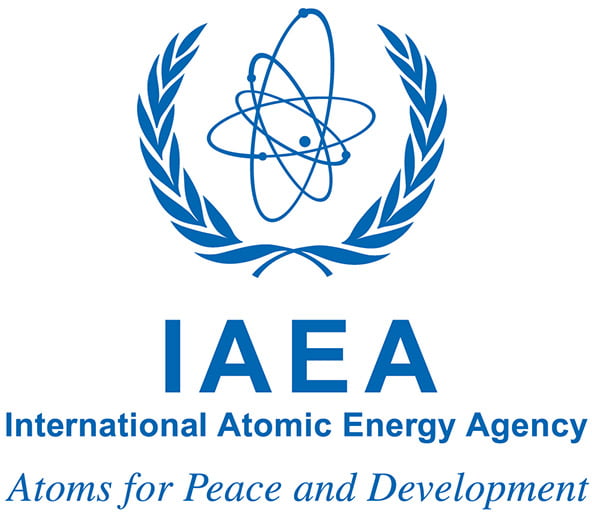International Atomic Energy Agency (IAEA)

(Relevant for UPSC Prelims – International Organisations; Mains GS-II – International Relations, Nuclear Policy)
Overview:
-
Full Form: International Atomic Energy Agency (IAEA)
-
Founded: 29 July 1957
-
Headquarters: Vienna, Austria (at UN Office)
-
Membership: 180 Member States
-
Current Director General: Rafael Mariano Grossi (Argentina, since 2019)
Mandate & Mission (Three Pillars):
-
Peaceful Uses: Promote civilian applications of nuclear energy in power, health, agriculture, water, etc.
-
Safeguards: Ensure nuclear material is not diverted to military purposes (esp. under NPT compliance).
-
Nuclear Safety & Security: Promote safety standards and protect against accidents and misuse.
Legal & Structural Basis:
-
Established under its Statute (1957)
-
Reports to both the UN General Assembly and Security Council
-
Originated from Eisenhower's "Atoms for Peace" speech (1953)
-
Guided by Article II & III of the IAEA Statute
-
Awarded Nobel Peace Prize (2005) with then Director-General Mohamed ElBaradei
Organizational Structure:
-
General Conference – All member states; meets annually
-
Board of Governors – 35 members; key policy-making body
-
Secretariat – Headed by Director General; executes functions through 6 departments
Major Departments & Initiatives:
-
Nuclear Energy – Advises on nuclear power and fuel cycle
-
Nuclear Sciences & Applications – Focuses on agriculture, medicine, water
-
Technical Cooperation – Assists developing countries with training, equipment
-
Safeguards – Verifies compliance with peaceful use
-
Nuclear Safety & Security – Post-Chernobyl and Fukushima emphasis
-
Management – Administrative support
Regional Programs:
-
AFRA – Africa
-
ARASIA – Arab States in Asia
-
RCA – Asia-Pacific
-
ARCAL – Latin America and Caribbean
Key Global Initiatives:
-
PACT – Cancer therapy in developing countries
-
ZODIAC – Zoonotic disease control (in partnership with WHO & FAO)
-
NUTeC Plastics – Nuclear tech to fight plastic pollution
-
NHSI – Regulatory harmonization for small modular nuclear reactors
-
Seismic Safety Centre – Established in 2008 for earthquake-prone nuclear regions
2022 Annual Report Highlights:
-
Expanded cancer treatment in Africa under Rays of Hope
-
Boosted zoonotic disease preparedness under ZODIAC
-
Promoted clean energy and climate resilience via NHSI
-
Addressed plastic pollution with NUTeC Plastics
Criticism:
-
Slow response to Fukushima disaster (2011)
-
Mandate conflict: Promotes nuclear energy while also policing it
-
Some nations argue IAEA lacks enforcement powers and independence in safety reviews
India and the IAEA:
-
India is a full member of the International Atomic Energy Agency (IAEA) since 1957 (founding year).
-
India plays an active role in the agency's governance and technical cooperation programs.
India is a full member of the International Atomic Energy Agency (IAEA) since 1957 (founding year).
India plays an active role in the agency's governance and technical cooperation programs.
India’s Safeguards Status:
-
India is not a signatory to the Nuclear Non-Proliferation Treaty (NPT).
-
However, after the India–U.S. Civil Nuclear Agreement (2008), India:
-
Voluntarily placed 14 civilian nuclear reactors under IAEA safeguards.
-
Signed an India-specific safeguards agreement with the IAEA in 2009.
UPSC Relevance:
India is not a signatory to the Nuclear Non-Proliferation Treaty (NPT).
However, after the India–U.S. Civil Nuclear Agreement (2008), India:
-
Voluntarily placed 14 civilian nuclear reactors under IAEA safeguards.
-
Signed an India-specific safeguards agreement with the IAEA in 2009.
Prelims:
-
IAEA HQ: Vienna, Austria
-
Nobel Peace Prize: 2005
-
Associated with NPT safeguards
-
Three pillars: Peaceful use, Safeguards, Safety
Mains (GS-II):
-
Role in non-proliferation and nuclear diplomacy
-
India's position on nuclear safeguards and civilian cooperation
-
IAEA's role in conflict zones (e.g., Iran, North Korea, Ukraine)
